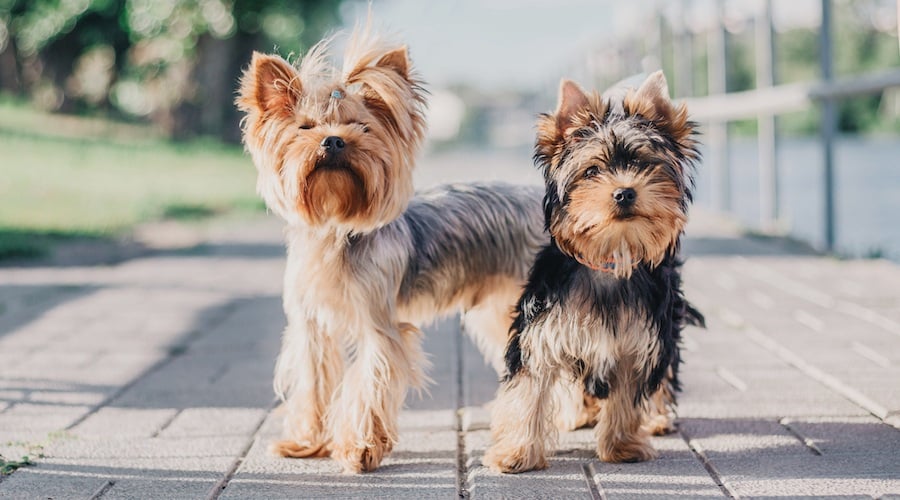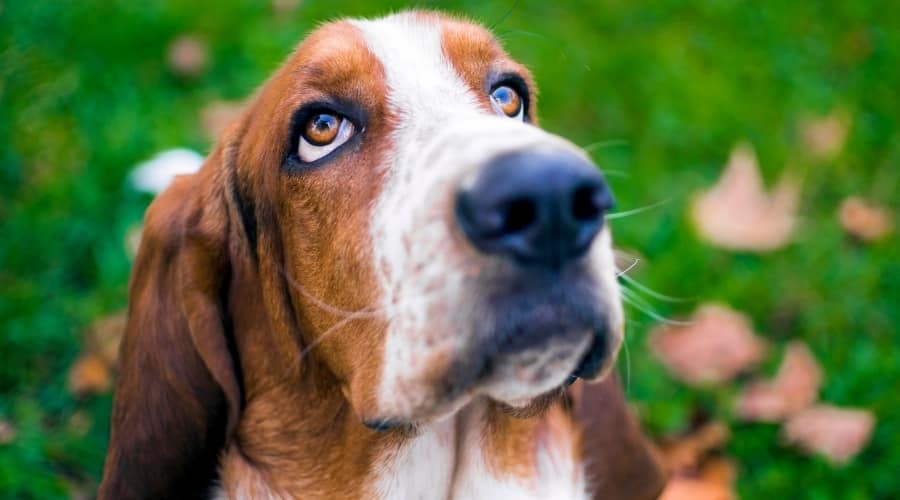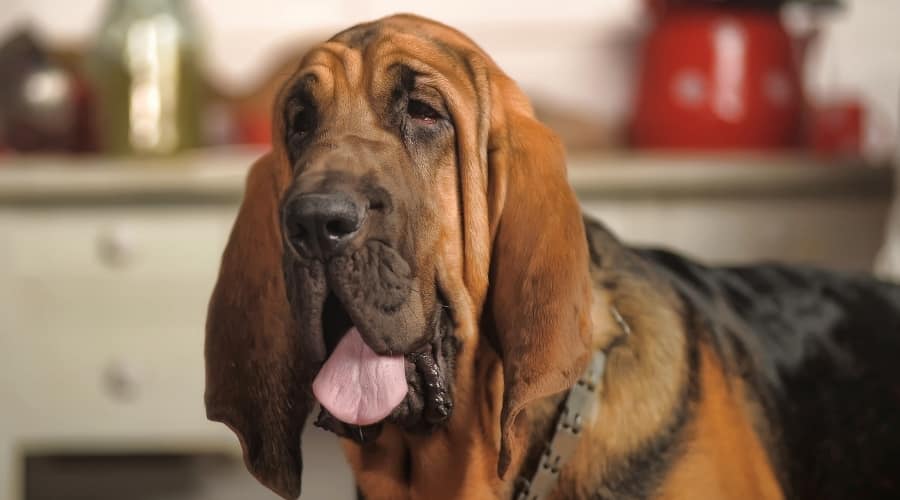Hardest Dogs To Train? These 20 Might Actually Train You!
When you purchase through links on our site, we may earn a commission. Here’s how it works.
Think your dog’s stubborn? These breeds make “sit” feel like a negotiation. I’m talking eye-rolls, walk-offs, and full-on dramatic howls mid-command.
Table of Contents
Some are too smart to be bothered. Others are too lazy to pretend. A few just stare into your soul and do the opposite… on purpose.
From royal divas to scent-obsessed escape artists, these are the hardest dogs to train, and honestly, by the end of this list, you’ll wonder if you’re the one being trained.
Why Some Breeds Are Tricky To Train
You’re not alone if you’ve shouted “SIT!” across a dog park… only to watch your pup sniff a bush like you’re on mute.
The truth? Some dogs just aren’t wired to obey like others. They’re not strictly dumb. In fact, many of them are brilliant. But intelligence doesn’t always mean cooperation. These dogs heard you – they just don’t care.
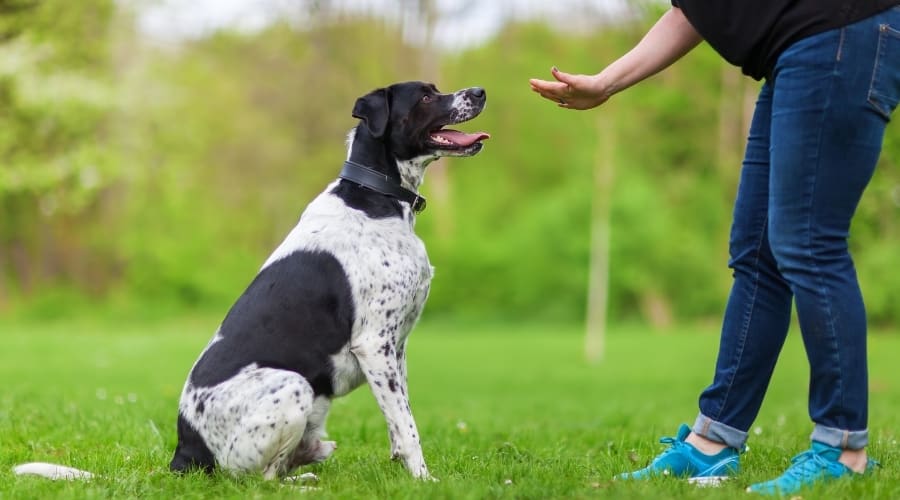
Many of these dogs were bred to think for themselves: hunters who had to track game solo, guardians who made decisions without humans, or royalty who were literally never expected to take orders.
In short: They’re not broken. They’re just independent. Distracted. Or kind of (adorable) jerks.
5 Drama Kings & Queens
Big personalities. Bigger attitudes. Zero interest in your commands.
These dogs don’t just ignore you; they ignore you with flair.
Whether they’re flopping dramatically mid-walk, howling back like they’re in a courtroom, or flat-out refusing to acknowledge your existence, these breeds specialize in maximum drama with minimum obedience.
They’re lovable, loyal, and occasionally feral in their defiance. If you’ve ever said, “They know what I’m asking, they’re just being a jerk,” you’ve probably met one of these dogs…
1. Bulldog
Moves like a bag of cement. Negotiates like a union boss.
Bulldogs don’t really disobey; they just stop moving and dare you to do something about it. These wrinkly tanks are known for their sweet demeanor and total indifference to urgency.
Training a Bulldog often means coaxing them through commands they heard perfectly… and chose to ignore. Add in their short attention span and frequent napping schedule, and you’ll find yourself wondering who’s walking who.

Bulldogs are low-energy breeds and happiest with short daily walks. Anything more, and they’ll protest with their whole body. Due to their brachycephalic (short-nosed) structure, they’re prone to overheating and do best indoors when it’s too warm.
They’re great with kids, affectionate, and make excellent apartment dogs, but they need early socialization and consistent, low-drama routines to avoid stubborn meltdowns.
2. Bull Terrier
Looks like a cartoon character. Acts like one, too.
Bull Terriers are all chaos, all the time. Training one feels like chasing a toddler who just drank a Red Bull. They’re strong, clownish, and stubborn in the most hilarious way. Often pretending not to hear you while inventing their own games mid-session.
They’re smart, but wildly independent, and they’re not doing anything just because you asked nicely. Bull Terriers need lots of exercise and mental stimulation. A bored Bull Terrier is basically a wrecking ball with legs.

They’re incredibly loyal and loving with family, but their strength and wild energy can overwhelm small kids or passive owners. Early obedience and daily structure are critical, and they’re best suited to active homes that can keep up.
I’ve got a Bull Terrier mix named Bonkers, and let me tell you, the name fits. He’s supposedly part Staffordshire Terrier, but he’s 100% Bull Terrier when it comes to training attitude. It took me five years (yes, years) to teach him “paw.” My other dogs? Five minutes. Bonkers needed to think about it for half a decade.
3. Husky
Will scream in your face instead of sitting.
Siberian Huskies don’t follow commands. They hold press conferences about them. These vocal, high-energy drama dogs are famous for their howls, backtalk, and total resistance to authority.
They know what you’re asking. They just have notes. Training requires patience, humor, and maybe noise-cancelling headphones.
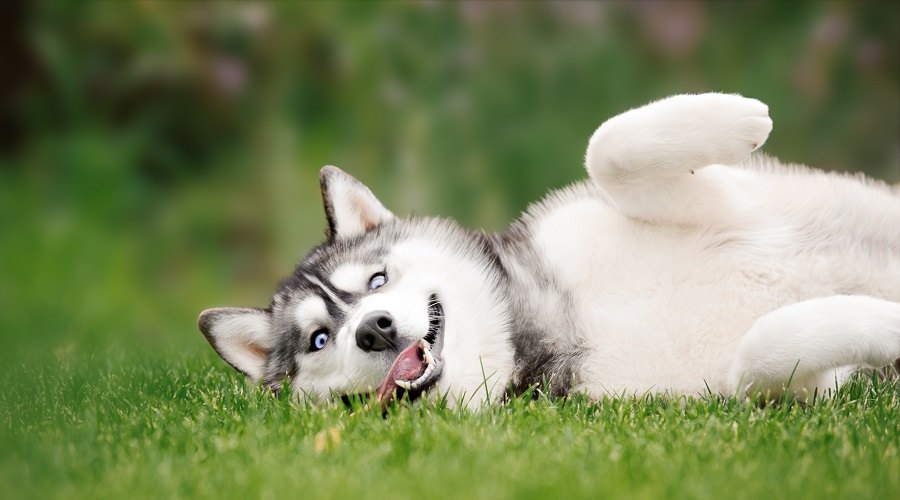
Huskies were bred to run for hours in Arctic conditions, so they need daily, intense exercise, or they’ll redecorate your house with their teeth.
They’re friendly, social, and surprisingly good with kids, but terrible off-leash and notorious escape artists. A fenced yard is a must, as is early socialization and crate training. They thrive in cool climates and busy homes where they won’t get bored.
Before your next “Where did they go?!” moment, check out our guide to the best GPS dog collars and SpotOn GPS Fences. All tested, reviewed, and perfect for tracking even the most dramatic runners.
4. Pekingese
Too royal to roll over. And honestly, how dare you ask?
Bred to be palace dogs for Chinese emperors, Pekingese haven’t forgotten their heritage. These fluffballs carry themselves like tiny monarchs and treat commands as insults.
They’re loving with their chosen humans, but incredibly proud and stubborn. Don’t expect a sit unless it aligns with their royal schedule.
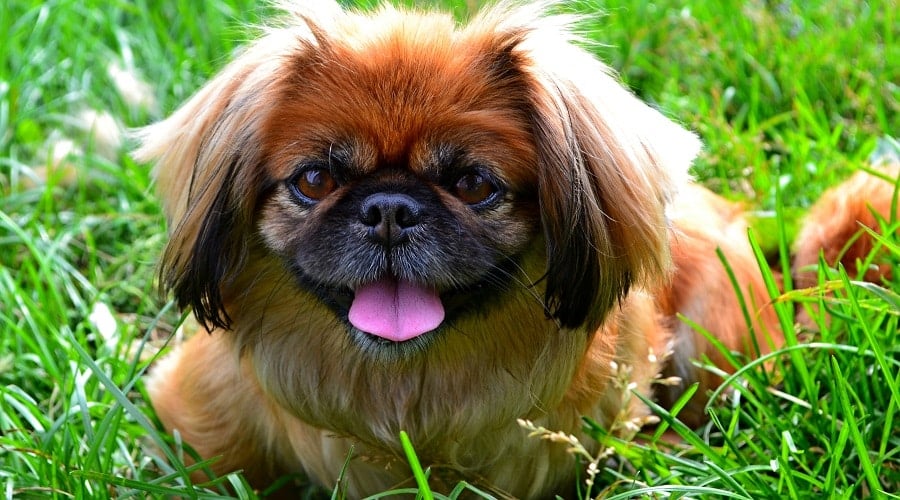
Pekingese require minimal exercise (a few short walks a day), but high attention from their humans. They’re often one-person dogs, fiercely loyal but not always tolerant of kids or strangers.
Training should be gentle and consistent, and harsh correction will only make them more stubborn. They thrive in calm, adult households and are well-suited to apartment life.
5. Shar-Pei
Suspicious of strangers, you, and commands.
Shar-Peis are wrinkly enigmas with a deep need for personal space and exactly zero interest in playing the obedience game. They’re loyal and protective, but training can be a serious challenge due to their independent streak and aloof temperament.
They’re not aggressive; they just don’t take orders from commoners.

Shar-Peis are naturally reserved and protective, which makes them excellent watchdogs, but they can be challenging in social situations. They require early and consistent socialization to prevent reactivity towards other dogs or unfamiliar people.
Exercise needs are moderate, but training must be firm, fair, and calm. They do best with experienced owners and may not be ideal for homes with young children or frequent visitors.
5 Independent Geniuses
Too smart to entertain your little “sit” game.
These dogs aren’t difficult because they’re slow; they’re difficult because they’re fast thinkers. They understand what you’re asking… they just don’t see the point.
Many of these breeds were developed to work independently, either as hunters, guards, or primitive survivors. And that “I got this” mindset is still very much alive today. They’re brilliant, aloof, and deeply uninterested in impressing you.
Don’t take it personally, because they probably wouldn’t listen to anyone.
1. Afghan Hound
Elegant, fast, and too fabulous to follow rules.
Afghan Hounds are basically supermodels with paws. Gorgeous, mysterious, and completely unbothered by authority. They were bred to chase prey in the mountains of Afghanistan, which means they made decisions independently, without human intervention.
Obedience training with an Afghan feels less like a lesson and more like a polite negotiation that they may or may not show up for.
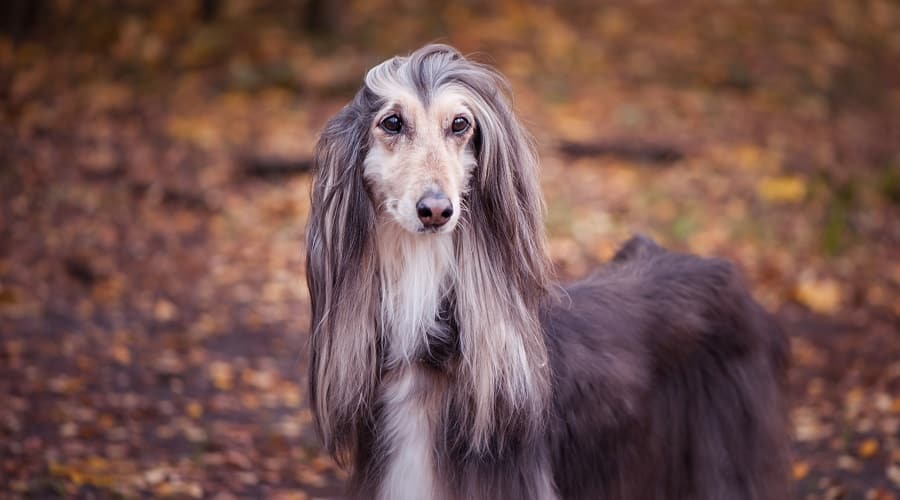
Afghans require ample off-leash exercise time in secure areas and are not well-suited for small apartments. They’re clean, quiet, and gentle at home, but easily distracted and aloof in training.
They’re good with families if raised properly, but don’t expect deep emotional clinginess. Afghans are more likely to pose regally across the room than curl up on your lap.
2. Borzoi
Majestic and mysterious, unless you’re holding a leash.
Borzoi look like floating clouds of grace, but behind that elegance is a dog who really doesn’t care about your training goals.
Originally Russian hunting dogs, they’re fast, independent, and notoriously aloof. Ask for a command and they might blink slowly, turn their head… and walk away.
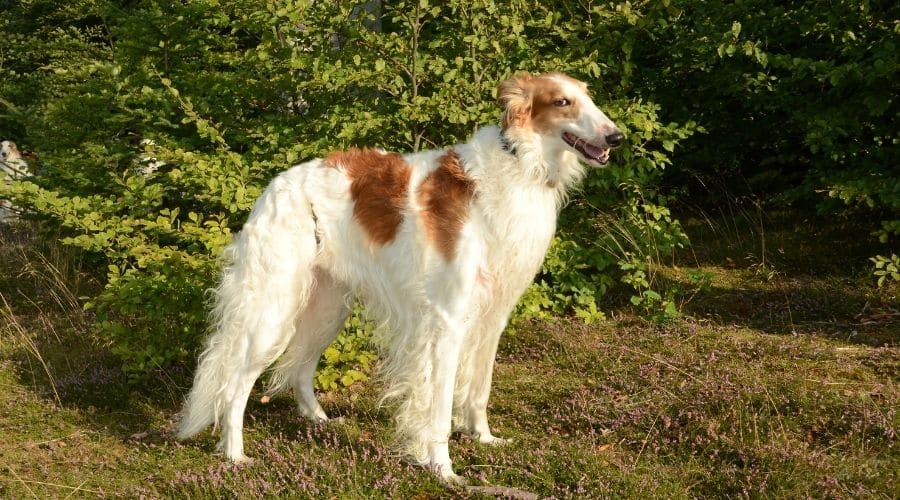
Like Afghans, Borzoi require space to run and a fenced area to keep their energy levels safe. They’re calm indoors and surprisingly well-mannered in the home, but have a strong prey drive and should never be trusted off-leash.
They bond closely with family but rarely show affection in a needy way. Expect to earn their respect, not demand it.
3. Canaan Dog
Primitive, proud, and always planning two steps ahead.
The Canaan Dog is one of the oldest breeds still in existence, and it shows. The national dog of Israel, the Canaan Dog, traces its origins back to the ancient Pariah breed.
In the 1930s, the breed’s modern founders captured feral Pariah dogs to recreate an ancient breed. They needed to be versatile enough to herd and guard livestock but also perform many military-style service tasks that required a keen sense of hearing and smell as well as a wild-type self-preservation instinct.
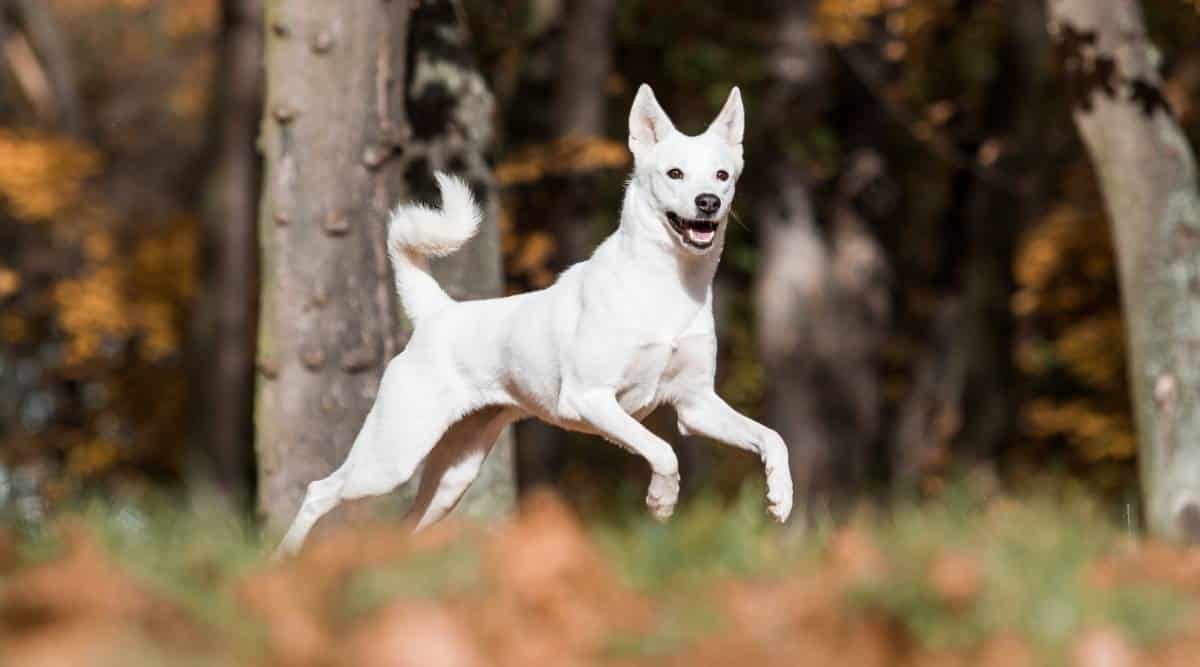
They carry the instincts of wild survival in everything they do. Training one feels less like teaching and more like negotiating with a highly alert, slightly skeptical roommate. They’re intelligent, capable, and incredibly self-directed.
Used as guardians, mine detectors, message carriers, and Red Cross helpers, Canaan Dogs have been instrumental during Israel’s times of war. Best suited to experienced owners who respect their independence.
Canaans require early socialization and calm, confident handling. They can be reserved or even defensive with strangers and unfamiliar dogs, but extremely loyal to their chosen people. They’re not high-energy but do need consistent exercise and mental stimulation.
4. Chow Chow
Acts like a cat. Looks like a lion. Obeys like neither.
Chows are dignified, clean, and famously aloof, a combination that makes them wonderful… if you’re not hoping for obedience. They bond tightly to their people but are famously indifferent to strangers and new experiences.
Chows don’t bark much, and they definitely don’t beg. And they absolutely do not care about “sit” unless there’s something in it for them. They prefer to walk in front of you to lead and to remain alert around you.
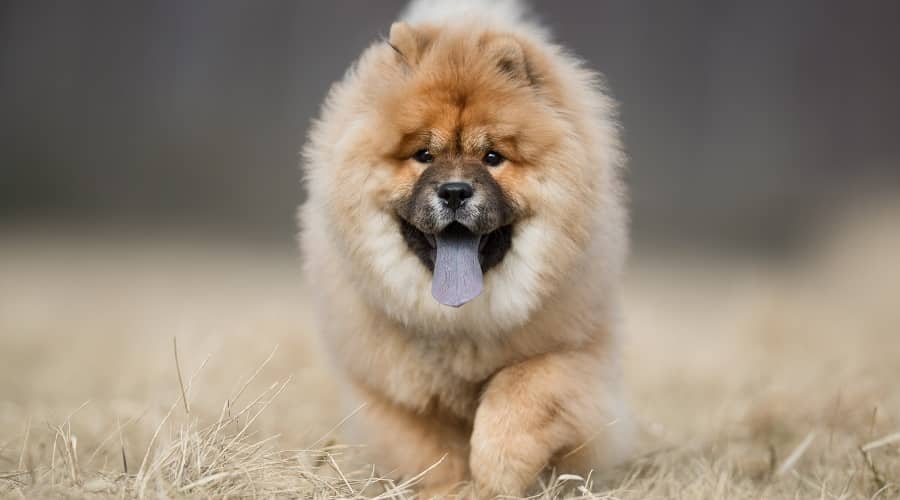
Chow Chows are best owned by a breed expert. They need someone experienced in reading their signals and properly socializing them to calmly accept other people.
Chows do best with calm, firm, consistent routines. They’re not great for first-time dog owners and require early socialization to prevent reactivity or aggression.
They’re relatively low-energy indoors, making them suitable for urban living, but they need structure to avoid becoming stubborn or snappy. Not ideal for households with very young kids.
5. Greyhound
Graceful on the outside. Emotionally in airplane mode.
Greyhounds are fast, beautiful, and surprisingly lazy, but when it comes to training, many owners are shocked at how little they respond. They’re not dumb; they’re just tuned into a different frequency.
Bred for sprinting after prey, not following human orders, Greyhounds tend to either ignore you politely or stare into the void while you repeat “stay” for the sixth time. They like an easy life.
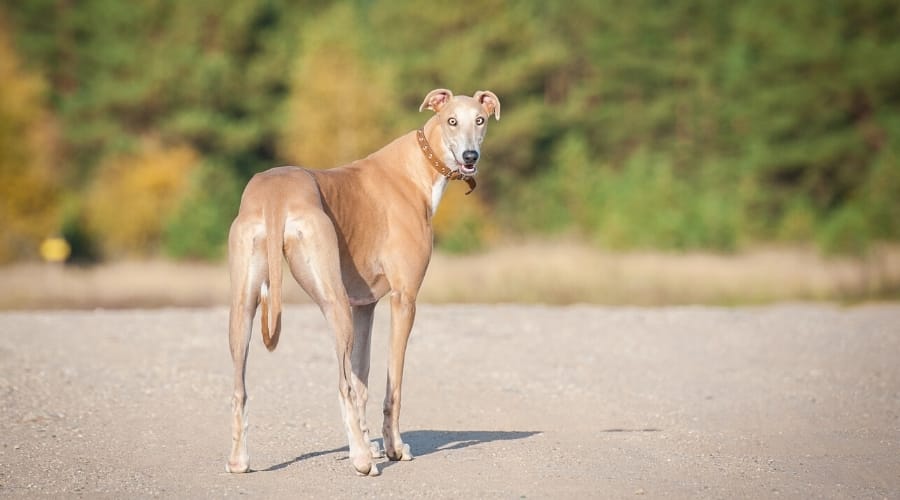
Scent hounds are slow and methodical, but sighthounds like the Greyhound explode into action and run after their prey like the wind. It’s this instinct that makes the Greyhound a challenge to train. If they focus on something, they’ll ignore other stimuli around them, including you.
Retired racing Greyhounds are often adopted as pets and can make fantastic companions, quiet, gentle, and happy with short daily walks.
But they need soft, positive reinforcement, not harsh correction. They can be emotionally sensitive and easily overwhelmed, so routines and patience are key. Excellent in calm homes, not ideal for high-energy households or toddlers.
4 Nose-Driven Ghosters
If there’s a smell, there’s no obedience.
These dogs were bred to track, trail, and follow scent, not instructions.
Once their nose locks onto a scent, everything else, such as your voice, your treats, your frantic waving, becomes background noise. They’re not ignoring you to be rude. They’re just biologically programmed to follow smells first and people second.
If you want a training win with these pups, you’ll need high-value rewards, ironclad patience, and a leash. Always a leash.
1. Basset Hound
Loyal, laid-back, and totally uninterested in your plans.
The Basset Hound is the slowest rebel you’ll ever meet. Known for their long ears and droopy eyes, they look like sleepy angels. But when it comes to training, they are glacially stubborn.
Their incredible sense of smell (second only to the Bloodhound) means they’re always halfway through a sniff when you’re calling them to come.
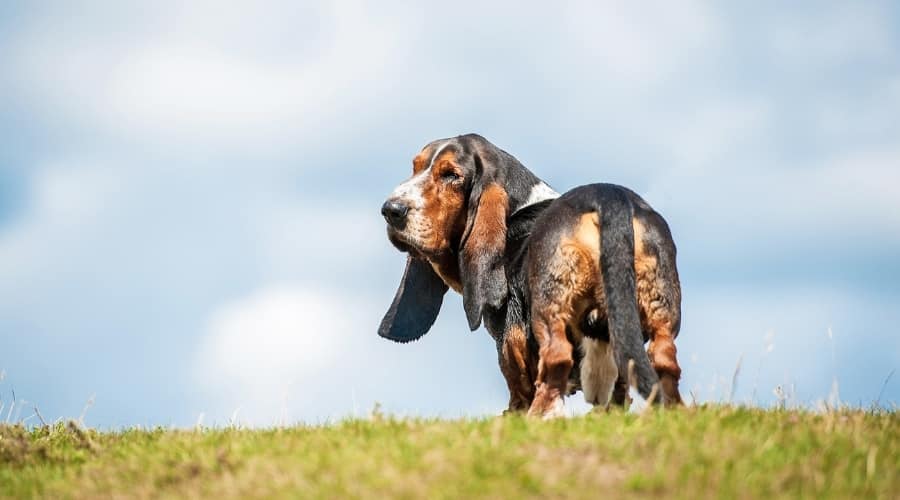
Bassets need moderate daily walks but aren’t built for speed or agility. Great with kids and very affectionate, they’re lovely family dogs.
Just don’t expect quick results in obedience class. Use positive reinforcement and never rush them. Consistency and patience are everything. Luckily, Bassets are food-motivated and loyal, loving dogs.
Training a Basset isn’t over when they learn the command. You must work with them daily to reinforce your training and always be consistent. You must expect them to ignore you sometimes. If you’re on a walk, keep them leashed for their safety.
Walking a Bloodhound and other scenthounds isn’t always a stroll; it’s a scent-fueled tug-of-war. We’ve rounded up the best dog leashes and best harnesses for pullers, sniffers, and four-legged freight trains.
2. Beagle
Will follow a squirrel trail straight into the next zip code.
Beagles are sweet, social, and driven almost entirely by their noses. They’ll pretend not to hear you, not because they don’t love you, but because the grass smells like raccoon. Training a Beagle off-leash is an advanced-level sport, and even then, the scent usually wins.
Beagles need lots of exercise and mental enrichment, or they’ll invent their own (usually destructive) games. These are howlers, too. Very vocal and dramatic, which isn’t ideal for thin-walled apartments unless your neighbors love the sound of baying.

They’re wonderful with children, friendly with other dogs, and thrive in active households. Just make sure your yard is escape-proof.
While Beagles are food-motivated (which helps with training), their short attention span and constant urge to sniff make structured obedience a long-term project. Early training, crate routines, and scent-based games work best.
3. Bloodhound
Smells everything. Hears nothing.
The Bloodhound is the undisputed king of scent tracking, and one of the most famously stubborn dogs alive. Their sense of smell is so powerful, they can follow a scent trail that’s days old… but they will not follow a “sit” command if they’ve caught a whiff of something better.
Training a Bloodhound is like working with a genius who’s constantly distracted by invisible cake. They are tough to train reliably without a strong-willed (and scent-savvy) owner. They’re also not for neat freaks, because they drool like it’s their job.
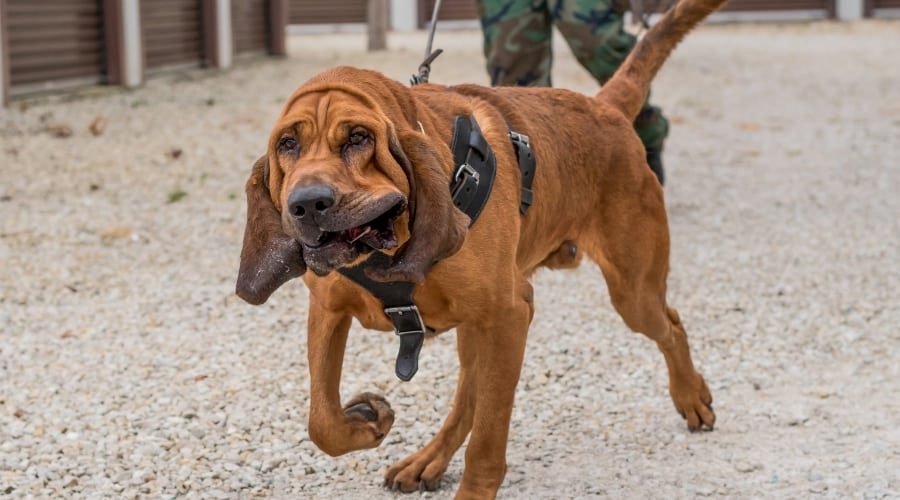
Bred to track missing or hiding people over long distances and challenging terrain, Bloodhounds can be single-minded and unwilling to relinquish their autonomy. If a dog this size takes off on a scent, not every adult will be able to hang on to the leash.
Bloodhounds require structured, scent-based activities and secure outdoor space. Their droopy charm hides a stubborn streak a mile wide. They’re friendly and generally good with kids.
4. Dachshund
Tiny dog, big nose, even bigger opinions.
Don’t let the size fool you. Dachshunds are bold, confident, and notoriously strong-willed. Originally bred to track and flush out burrowing animals, these little hounds still operate with a mission mindset.
If they catch a scent, they’ll dive nose-first into the abyss and pretend you don’t exist. They’re good in small homes or apartments but require consistent rules and zero tolerance for diva behavior.

Dachshunds need daily walks and scent-driven play to avoid behavioral issues. They’re fun, affectionate, and full of personality, but they can be bossy and tough to train, especially with housebreaking.
They need interactive play and limited jumping (to protect their long backs). They do well in small homes or apartments but are prone to barking at every leaf that moves. If you’re looking for a loyal sidekick with main character energy and zero regard for your authority, the Dachshund delivers.
5 Gentle Giants with Giant Egos
Big dogs. Bigger opinions. Slowest “sit” you’ve ever seen.
These breeds aren’t aggressive or wild; they’re just too large and too proud to jump when you say “jump.” They were often bred for protection, guarding livestock, or making decisions in remote environments, and they still carry that self-directed attitude.
They’re loyal, powerful, and usually loving with their people. But if you expect instant obedience from a 100-pound dog who thinks they’re your equal, you’re in for a long, slow training session (if they decide to show up at all).
1. Akita
Loyal to you, suspicious of literally everyone else.
Akitas are dignified, powerful, and deeply bonded to their owners, but not particularly interested in being told what to do. They’re quiet and thoughtful, but they don’t tolerate nonsense (or strangers).
When it comes to training, they’ll cooperate only if they respect you. If not, good luck. Akitas need early and intense socialization to prevent overprotectiveness and reactivity. They are not ideal for homes with small kids or multiple dogs unless carefully introduced.

These dogs are extremely clean, low-energy indoors, and naturally reserved, but they need firm, consistent leadership from an experienced owner. They’re not barky, but their silent stares say everything.
One of the world’s most famous Akitas was Hachikō, a dog in Japan who waited at a train station every day for over nine years after his owner passed away. His loyalty became legendary, and today, he is honored with a statue at Shibuya Station in Tokyo, a reminder that an Akita’s bond runs deep, even if they pretend not to hear “sit.”
2. Bullmastiff
Won’t move unless it was their idea first.
Bullmastiffs are quiet, serious, and known for their calm, confident presence. They don’t lash out, they plant. Once they’ve decided not to move, no amount of pleading or leash tugging will change their mind.
They’re protective, deeply attached to their family, and unlikely to entertain commands they find unnecessary.
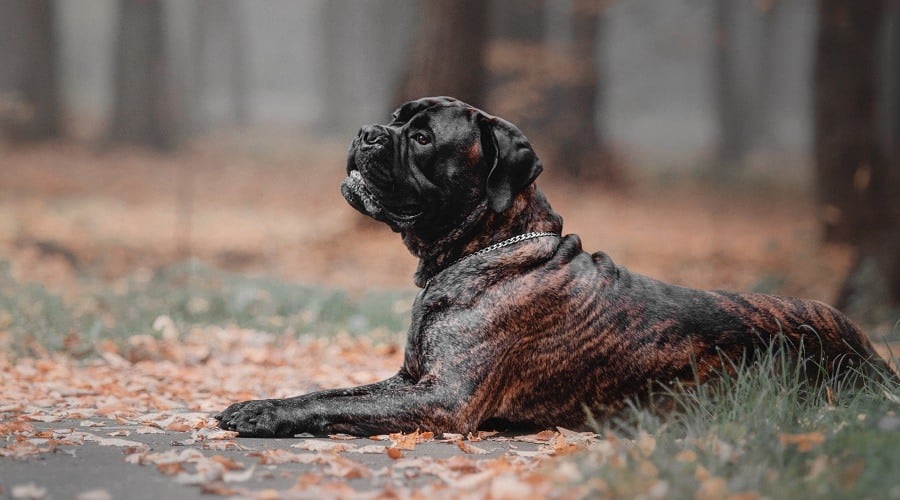
Bullmastiffs do best in homes with space and structure. They need moderate daily walks but no excessive exercise, and they benefit from short, consistent training sessions starting in puppyhood.
They’re typically gentle with kids but can be intimidating due to their size and strength. Owners need to establish boundaries early or risk raising a 130-pound couch anchor with opinions.
Train them with love and patient firmness. They’re not appropriate for all owners and all situations, but in the right home with consistently enforced boundaries, they defend their family with love and honor.
3. Cane Corso
Strong, smart, and not taking suggestions.
Cane Corsos are highly intelligent working dogs with a serious presence and a strong instinct to protect. Despite their intimidating look, they’re usually very affectionate with their family and can be great with kids if raised with them.
They’re not disobedient out of defiance; they just expect mutual respect, clear rules, and a leader who knows what they’re doing. Weak or inconsistent training won’t just be ignored. It’ll be tested.
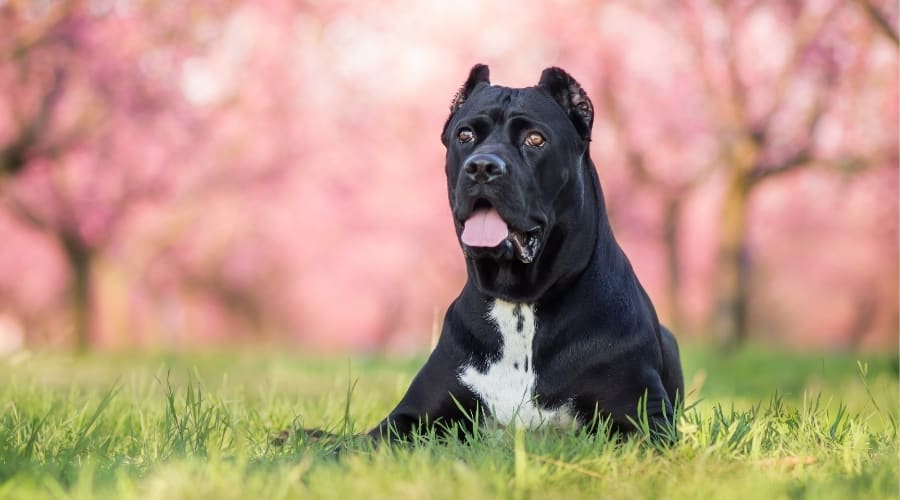
This breed needs early obedience, socialization, and a confident handler. They’re not a good choice for first-time owners, but with the right structure, they’re loyal, affectionate, and extremely trainable.
Cane Corsos need daily physical and mental exercise and do best in homes with experience managing large, dominant breeds. When trained well, they’re rock-solid family guardians.
4. Kuvasz
Independent by design. Guardian by default.
The Kuvasz was bred to guard livestock without human oversight, and it shows. They’re brave, aloof, and deeply loyal, but they don’t do well with traditional obedience routines.
If you want a dog who watches over your property like a paranoid detective but also ignores “down” because the grass is suspicious… this is your breed.
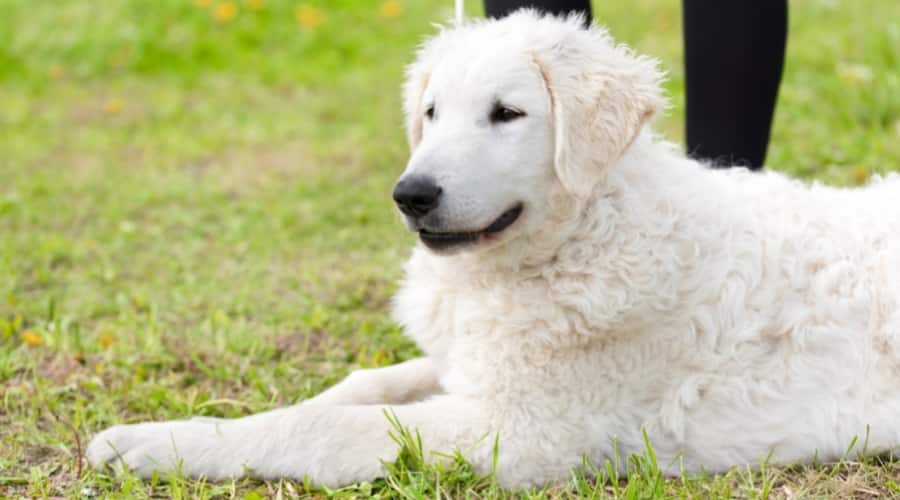
Kuvaszok (plural) require strong leadership, lots of space, and a job to do. It’s a careful balance of asserting your dominance as leader of the pack without destroying your pup’s trust.
They aren’t well-suited for city living or novice owners. They can be affectionate with their families but are naturally wary of strangers and unfamiliar dogs. Daily exercise and mental stimulation are essential to prevent destructive behavior and frustration.
Like many other livestock guardian dog breeds, Kuvaszok have a sensitive temperament. They mature slowly, so be prepared for some adolescent moments of poor judgment until they approach their third birthday.
5. Saint Bernard
Training takes a back seat to napping.
Saint Bernards are gentle, loving giants, and also incredibly stubborn. They’re not confrontational, just… immovable.
Their giant size and calm nature make them excellent family dogs, but if you need a dog who responds quickly to commands, this slobbery sweetheart might test your patience (and your flooring).
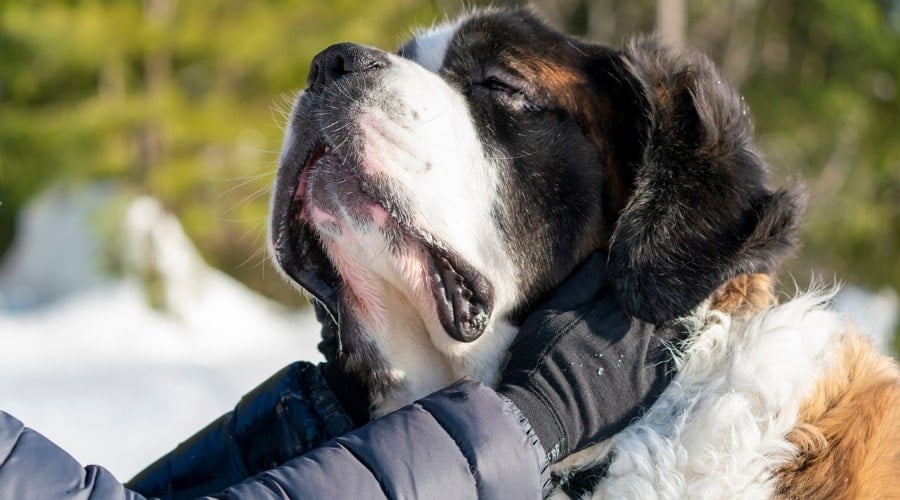
Saint Bernards need daily walks, not runs, and lots of indoor downtime. They’re usually great with kids, mellow with other pets, and deeply affectionate. But training takes time due to their slow maturity and independent streak.
Be prepared for drool, shedding, and the occasional selective hearing episode when you ask them to “heel” and they’d rather sniff or flop.
Training a Saint starts in early puppyhood. Praise and reprimand must come immediately upon the behavior in question, so your Saint Bernard understands what you expect of them. Much of training a Saint Bernard is consistently reinforcing behaviors that are acceptable when they’re full size.
1 Wild Wildcard
You’re not in charge; nature is.
This “dog” isn’t just hard to train. They operate on a completely different frequency. This part wild breed doesn’t respond to traditional training the way others do.
This pooch isn’t for first-time owners. They aren’t for casual dog people. These are dogs that demand experience, structure, and a deep respect for what they really are: loyal, intelligent… and just a little bit feral.
1. Wolf-Dog Hybrids
Half pet, half wild. Obedience isn’t in the contract.
Wolf-dog hybrids are precisely what they sound like: part domestic dog, part actual wolf. And while they might look majestic and bond tightly with their humans, they are notoriously unpredictable, high-maintenance, and extremely difficult to train.
Commands? Maybe. Instincts? Absolutely. That prey drive doesn’t turn off because you bought a clicker. Training a wolf hybrid is a long-term relationship built on trust. And even then, they’ll still revert to wild behaviors when stressed or overstimulated.
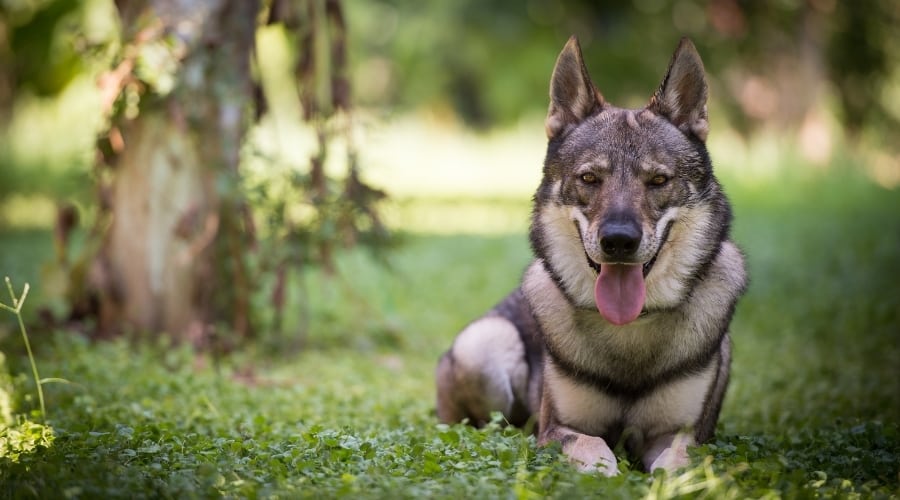
They need huge amounts of space and a handler with deep knowledge of primitive breeds. Socialization can be tricky, and they’re not safe around small pets or young children in many cases. Owning one is like sharing your life with a storm: powerful, unpredictable, and never fully tame.
Most experts agree they don’t belong in typical households, and in some states, they’re even regulated or banned. They’re beautiful, intelligent, and loyal in their own way. But if you want a dog who comes when called, you should look elsewhere.
Are These Dogs Just Dumb?
Spoiler: Nope. You just don’t speak “stubborn.”
It’s easy to label a dog “dumb” when they ignore basic commands. Especially after you’ve shouted “SIT” 12 times in a park full of judging strangers.
But here’s the truth: many of the hardest dog breeds to train are actually highly intelligent. They just have independent wiring. Many were bred to make decisions on their own: to track game, guard livestock, or do their jobs without needing your input every five seconds.
They know what you’re asking. They just don’t always agree with your leadership style.
Hard to train does not mean low intelligence. In fact, some of these dogs are too smart for repetitive drills and low-stakes obedience.
You’ll have better luck earning their respect than bribing them with treats. But with the right relationship, they’re capable of amazing things.
Should First-Time Dog Owners Avoid These Breeds?
Let’s just say… maybe start with something that actually wants to please you.
If you’re a first-time dog owner, you probably don’t want your training journey to feel like an exhausting power struggle with a fur-covered mastermind.
The breeds on this list can be incredibly rewarding: loyal, hilarious, and fiercely bonded to their people. But they’re also a challenge. They require structure, consistency, socialization, and often a level of experience in reading body language and managing dominant or stubborn behavior.
That doesn’t mean you can’t own one as a first-timer. But it means you’ll need to do your homework, work with a trainer, and be ready for more “What now?” moments than you’d get with, say, a Golden Retriever or a Poodle.
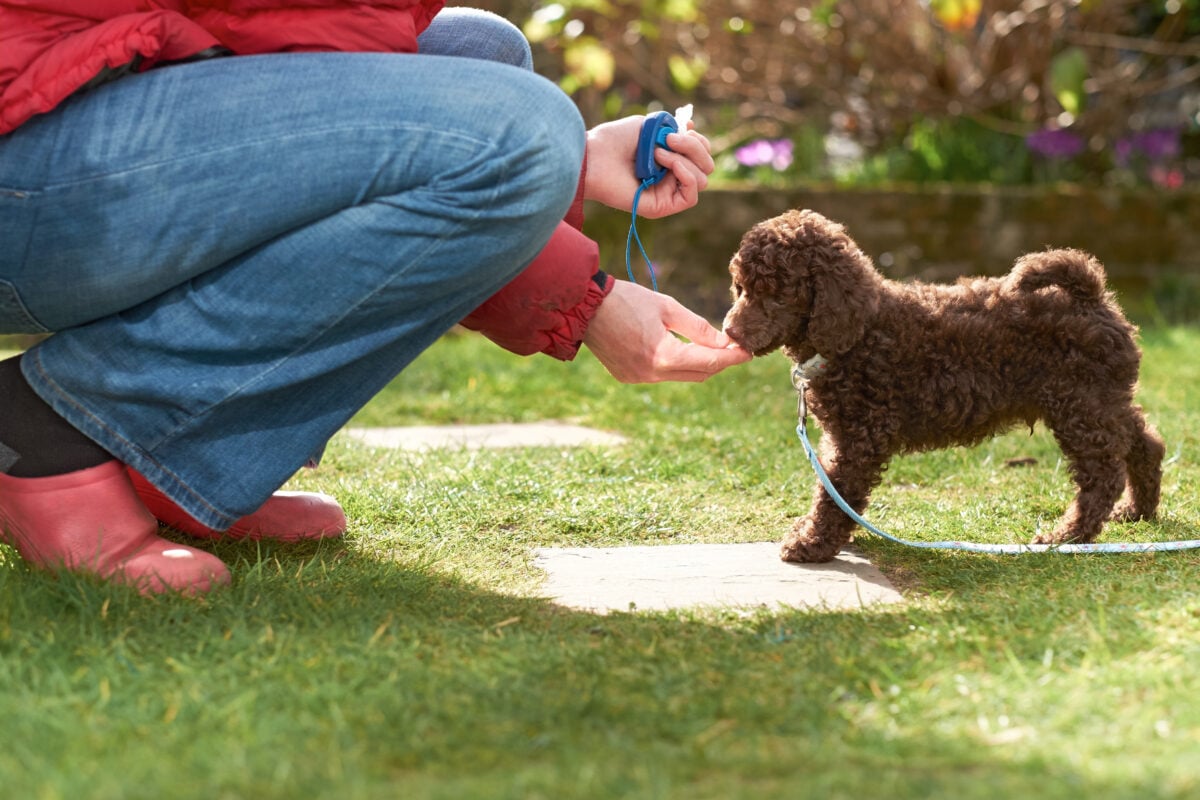
If you’re looking for a dog that’s forgiving of mistakes, easy to motivate, and eager to please… these might not be your best match. And that’s okay. Instead, pick the dog that matches your energy, not the one with the coolest eyebrows.
5 Quick Wins for Training a Stubborn Dog
You can’t force them. But you can outsmart them.
Training one of the hardest dog breeds to train isn’t about domination or repetition. It’s about strategy, timing, and outwitting a creature that thinks you’re slightly beneath them.
Here’s how to actually make progress with the fluffiest rebels and strongest-willed goofballs:
1. Use High-Value Rewards
If you’re trying to train a Beagle with dry kibble, you might as well be offering cardboard. Stubborn breeds need incentives that matter. Think real meat, freeze-dried liver, cheese, or even their favorite toy. You’re not bribing them, you’re competing with instinct, distraction, and disinterest. Make it worth their while.
Test a few different rewards and find your dog’s jackpot. For some, it’s hot dog slices. For others, it’s squeaky toy chaos.
2. Keep Sessions Short
Your dog isn’t being lazy, they’re just bored with your syllabus. Most stubborn or independent breeds mentally check out within five minutes if the training becomes repetitive.
Instead of dragging out 20-minute obedience marathons, do two or three mini-sessions a day, each one fun, fast, and focused on a single goal.
3. Train After Exercise, Not Before
A Husky that hasn’t had a walk? A Bloodhound that just woke up? Good luck. High-energy or nose-obsessed breeds need to burn off that edge before they can focus. A quick walk, jog, or 10-minute sniff session can work wonders for their ability to engage and listen.
Training after exercise also helps reduce stubborn behavior caused by excess energy or anxiety.
4. Don’t Repeat Yourself
Saying “sit… sit… SIT… siiiiit” doesn’t make it more effective; it makes it white noise. Dogs (especially the hard-to-train ones) quickly learn that multiple cues mean they can wait it out. Instead, say it once, wait a few seconds, and if they don’t respond, reset and try again. Clarity beats nagging.
Use hand signals. Many dogs respond faster to visual cues than verbal ones, especially if your voice is monotone.
5. Make It a Game, Not a Test
Stubborn dogs often rebel when training feels like a job. But if it feels like a game? Now they’re in. Use treat puzzles, hide-and-seek, tug games, or “find it” drills to make learning interactive and reward-driven. You’re not lowering the standard, you’re raising the fun.
Example: Teaching recall? Hide behind a couch, call their name, and toss a treat when they find you. Way better than yelling from across the yard.
These tips won’t turn your Bull Terrier into a Border Collie overnight, but they’ll make training way less frustrating and way more fun. For both of you.
What Next? More Training Tips, Tools & Real Talk
Struggling with a stubborn pup (or just want to level up your training game)? We’ve got plenty more where this came from.
If you’re looking for the best dog training app, we tested all the big names in our review. Want a more structured approach? Our deep dive into the best online dog training courses compares everything you need to know to train any of the toughest dogs to train.
Wondering if you should send your dog away for training? Don’t make a decision without reading our full breakdown of board & train vs. at-home training. Curious about Spirit Dog Training? So were we, and we went deep. And yes, we also reviewed Doggy Dan’s training program.
Tell Us About Your Stubborn Pup! Have a dog who flat-out refused to sit? One that took three years to learn “stay”? We want to hear it. Drop your funniest, most frustrating, or most relatable hard-to-train dog stories in the comments.

